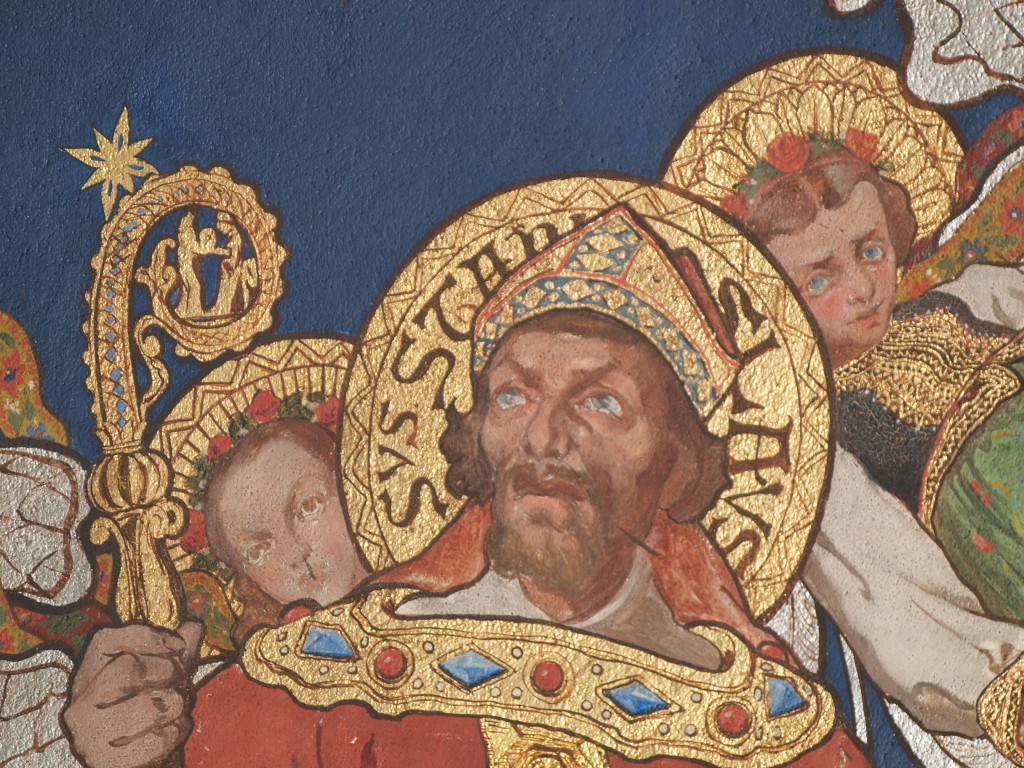It is traditionally believed that Stanislaus (Stanisław) was born in Szczepanów ca. 1030. He was educated at cathedral schools in Poland, though he might have also stayed abroad for some time, maybe in Paris. He was appointed a Cracow canon at quite an early age because of his education or perhaps for being well-connected due to his high status at birth. In 1072, he was raised to the position of the Bishop of Cracow, as Bishop Lambert appointed him his successor. Stanislaus was very zealous in his ministry and spared no effort to work for the benefit of his diocese. Lacking reliable accounts, we do not know why, however, in the midst of the Polish state’s turbulent internal politics, he fell out of favour with King Bolesław the Generous (later known as Bolesław the Bold).
According to more recent tradition, the bishop stood up for the faithful who suffered oppression and were too severely punished by the king; he might have also reproached the king for his immoral life. In any case, public opinion was split in assessing the situation and there was no uniform judgment about the position taken by the zealous bishop. Disputes on the reformatory activity of Pope Gregory VII, which divided Europe at that time, might also have been looming in the background of the split. The conflict resulted in a bloody tragedy on the 8th of May 1079. The bishop was killed by royal servants when celebrating the Holy Mass at St Michael’s Church on Skałka. Following later accounts, he died at the hand of the king himself. We know the consequences of this act but we do not know the exact circumstances of that event, due to the lack of reliable sources. The king was forced to flee the country, while the memory of the life and activity of the saintly bishop has survived for centuries.
At the turn of the 11th and 12th centuries, the body of Bishop Stanislaus was transferred to Wawel Cathedral, which is evidence of the growing veneration of him. In the century that followed intensive efforts for his canonisation were undertaken. Rome was already very exacting at that time, so additional proof of his sanctity was demanded, which made the procedure more lengthy than expected. Finally, on the 17th of September 1253, Pope Innocent IV canonized Bishop Stanislaus during a solemn ceremony at St Francis’s Church in Assisi. The memory of St Stanislaus has had an enormous role in the formation of national awareness among Poles. His remembrance was reflected in numerous stories of the saint’s life, among which a special place is due to a literary work by the historian Jan Długosz, which for many years was regarded as the definitive biography of Bishop Stanislaus.
- St Stanislaus – detail of polychrome at Queen Sophia’s Chapel
Beside biographies, numerous poetry and liturgical works have been devoted to St Stanislaus, e.g. the famous hymn Gaude Mater Polonia. People prayed for the prosperity of the Homeland at the grave of St Stanislaus at Wawel Cathedral. Polish kings and military leaders used to hang their trophies – foreign army banners – on his altar. The banners of the Teutonic Knights from the battle of Grunwald (Tannenberg) of 1410 and a Turkish banner, a trophy from the battle of Vienna of 1683, were also hung there. Many churches were dedicated to St Stanislaus, with the ensuing numerous iconographic images depicting his figure, life and miracles.
The veneration of the saint shared by the nation was somewhat shaken in the 19th century, when the scarce source accounts were analysed by critical historians and a hypothesis about the bishop-traitor was put forward by some researchers. This stirred never-ending debates, which sometimes had nothing in common with the impartiality needed for research work. The outcomes of a detailed examination carried out by the Roman Curia before the canonisation were corroborated in 1963 after the examination of the relics of St Stanislaus – the skull of a man with the trace of a dull blow, probably the cause of death.
Since the issuance of the canonisation bulla, the Day of St Stanislaus has been celebrated on the 8th of May. Despite the fact that the 7th of May has been indicated in the Roman calendar since 1594, Polish dioceses have stuck to the original date. The most recent Roman calendar and the martirologium catalogue have opted for the 11th of April.

